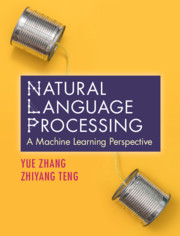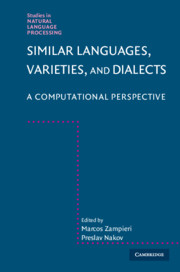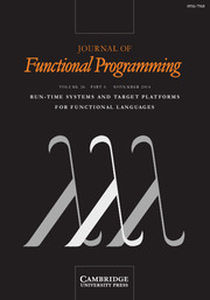Natural Language Processing
With a machine learning approach and less focus on linguistic details, this gentle introduction to natural language processing develops fundamental mathematical and deep learning models for NLP under a unified framework. NLP problems are systematically organised by their machine learning nature, including classification, sequence labelling, and sequence-to-sequence problems. Topics covered include statistical machine learning and deep learning models, text classification and structured prediction models, generative and discriminative models, supervised and unsupervised learning with latent variables, neural networks, and transition-based methods. Rich connections are drawn between concepts throughout the book, equipping students with the tools needed to establish a deep understanding of NLP solutions, adapt existing models, and confidently develop innovative models of their own. Featuring a host of examples, intuition, and end of chapter exercises, plus sample code available as an online resource, this textbook is an invaluable tool for the upper undergraduate and graduate student.
- Systematically discusses natural language processing from a machine learning perspective, delivering a deeper mathematical understanding of NLP solutions. Students can then harness this knowledge to solve NLP tasks and build better NLP models.
- Provides running examples, figures, and high-level description throughout, allowing students to absorb machine learning concepts and proofs in a meaningful way
- 200 end-of-chapter questions and 80 illustrations provided throughout, reinforce student understanding
- Features in-depth discussion of deep learning methods and NLP
- Establishes a strong correlation between deep learning and linear models for NLP, smoothing the steep learning curve for students as they draw connections between these concepts in a unified framework
- Explains the reasoning behind NLP models so that engineers will be able to better use, tailor, and even improve them
Reviews & endorsements
'An amazingly compact, and at the same time comprehensive, introduction and reference to natural language processing (NLP). It describes the NLP basics, then employs this knowledge to solve typical NLP problems. It achieves very high coverage of NLP through a clever abstraction to typical high-level tasks, such as sequence labelling. Finally, it explains the topics in deep learning. The book captivates through its simple elegance, depth, and accessibility to a wide range of readers from undergrads to experienced researchers.' Iryna Gurevych, Technical University of Darmstadt, Germany
'An excellent introduction to the field of natural language processing including recent advances in deep learning. By organising the material in terms of machine learning techniques - instead of the more traditional division by linguistic levels or applications - the authors are able to discuss different topics within a single coherent framework, with a gradual progression from basic notions to more complex material.' Joakim Nivre, Uppsala University
'The book is a valuable tool for both beginning and advanced researchers in the field.' Catalin Stoean, zbMATH
'This is a very well-written book. It provides a good introduction on the background of NLP, which will lay a good foundation for students to learn the emerging LLMs.' Chen Kan, University of Texas at Arlington
Product details
December 2020Adobe eBook Reader
9781108352178
0 pages
This ISBN is for an eBook version which is distributed on our behalf by a third party.
Table of Contents
- Part I. Basics:
- 1. Introduction
- 2. Counting relative frequencies
- 3. Feature vectors
- 4. Discriminative linear classifiers
- 5. A perspective from information theory
- 6. Hidden variables
- Part II. Structures:
- 7. Generative sequence labelling
- 8. Discriminative sequence labelling
- 9. Sequence segmentation
- 10. Predicting tree structures
- 11. Transition-based methods for structured prediction
- 12. Bayesian models
- Part III. Deep Learning:
- 13. Neural network
- 14. Representation learning
- 15. Neural structured prediction
- 16. Working with two texts
- 17. Pre-training and transfer learning
- 18. Deep latent variable models
- Index.









